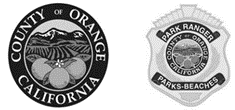In one of two concurrent opinions concerning the same design patent case, the US Court of Appeals for the Federal Circuit vacated a district court’s entry of a preliminary injunction after concluding that the court had failed to properly consider the accused products separately and in view of the prior art when determining the plaintiffs’ likelihood of success. ABC Corp. I v. P’ship & Unincorporated Ass’ns Identified on Schedule “A”, Case No. 22-1071 (Fed. Cir. Oct. 28, 2022) (Dyk, Taranto, Stoll, JJ.)
Hangzhou Chic Intelligent Technology and Unicorn Global (collectively, the plaintiffs) own four patents claiming designs for handle-less, two-wheeled, motorized, stand-on vehicles commonly referred to as “hoverboards.” Urbanmax, GaodeshangUS, Gyroor-US, Fengchi-US, Jiangyou-US, Gyroshoes and HGSM (collectively, the appellants) sell Gyroor-branded hoverboards. In 2020, the plaintiffs sued the appellants for patent infringement and sought a temporary restraining order and a preliminary injunction. As explained here, the district court granted the preliminary injunction in 2020, but thereafter invited the plaintiffs to file a second motion for a preliminary injunction in light of unsuccessful motions by Fengchi-US, Urbanmax and Gyroor-US to dissolve the 2020 preliminary injunction for lack of notice under Fed. R. Civ. P. 65(a). Heeding the court’s advice, the plaintiffs filed a motion for a second preliminary injunction on August 24, 2021.
The primary issue before the district court concerning the 2021 preliminary injunction was whether the plaintiffs had demonstrated a likelihood of success on the merits that the accused products infringed the plaintiffs’ patents in light of certain prior art hoverboards. The prior art included a hoverboard with an hourglass-shaped body, which was a significant feature of the patented designs and the majority of the accused products. Despite the similarities between the prior art board and the claimed designs, the plaintiffs generally disregarded the prior art in their analysis. After comparing the four accused products as a group to the claimed designs, the plaintiffs’ expert opined that the accused products infringed the asserted patents based in large part on their similar hourglass bodies, in addition to other features.
The appellants’ expert countered that “the attention of the hypothetical ordinary observer will be drawn to those aspects of the claimed design that differ from the prior art,” rather than the hourglass shape, and that the additional ornamental features of the accused products were not substantially similar to the claimed designs. While the district court acknowledged that “resolving this expert dispute will likely require a trial,” it nonetheless concluded that the plaintiffs had demonstrated likelihood of success and entered the preliminary injunction order. The appellants filed a notice of appeal.
On appeal, the Federal Circuit concluded that the lower court had erred in four material respects:
- Applying the wrong legal standard
- Failing to conduct the ordinary observer analysis in view of the prior art
- Failing to apply the ordinary observer analysis on a product-by-product basis
- Crafting an overbroad injunction.
First, the Federal Circuit took issue with the district court’s entry of a preliminary injunction despite its [...]
Continue Reading
read more


 Subscribe
Subscribe




